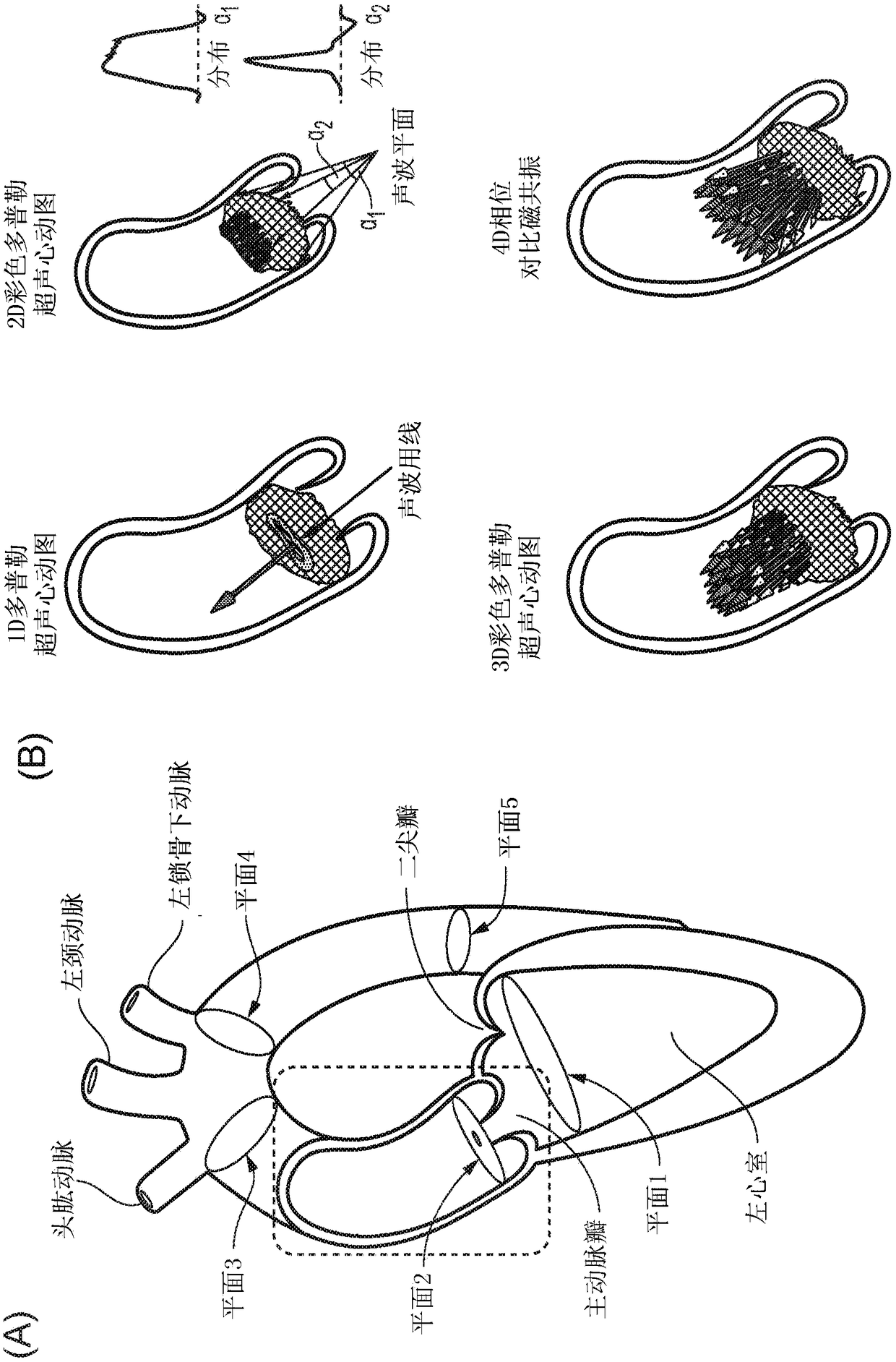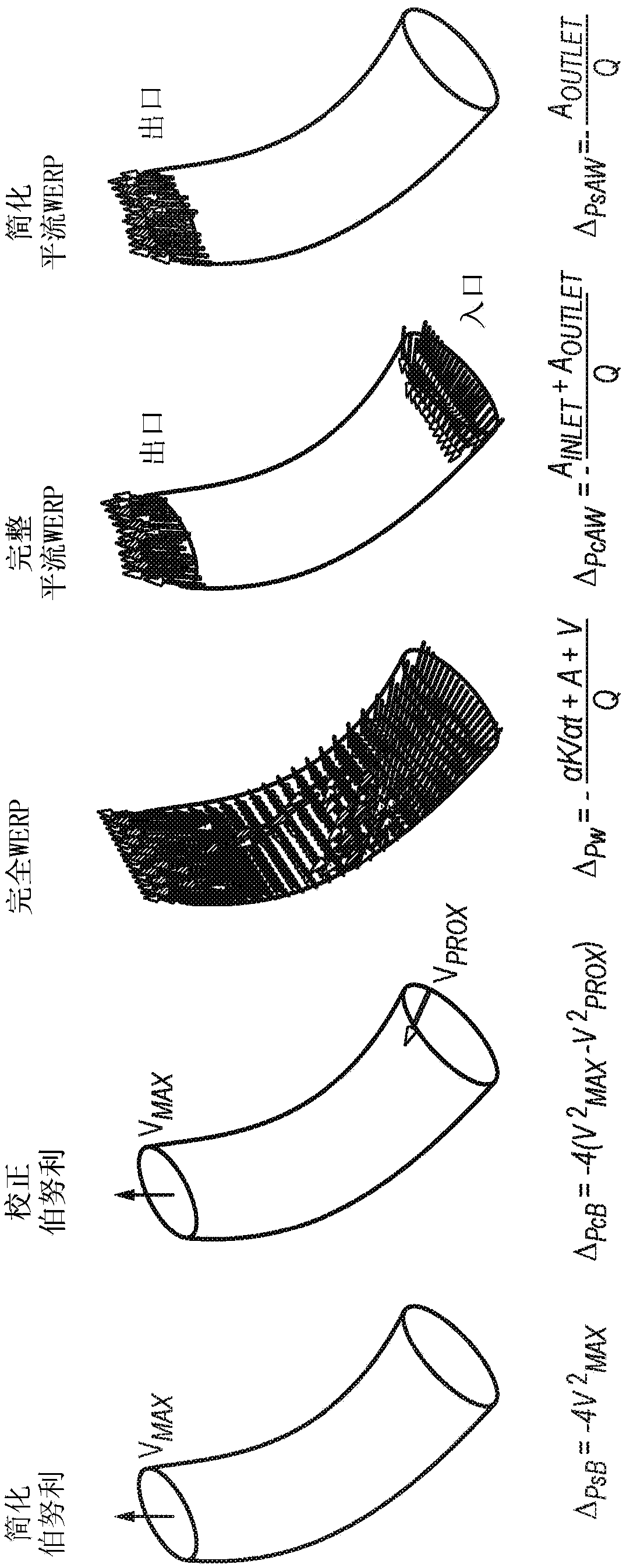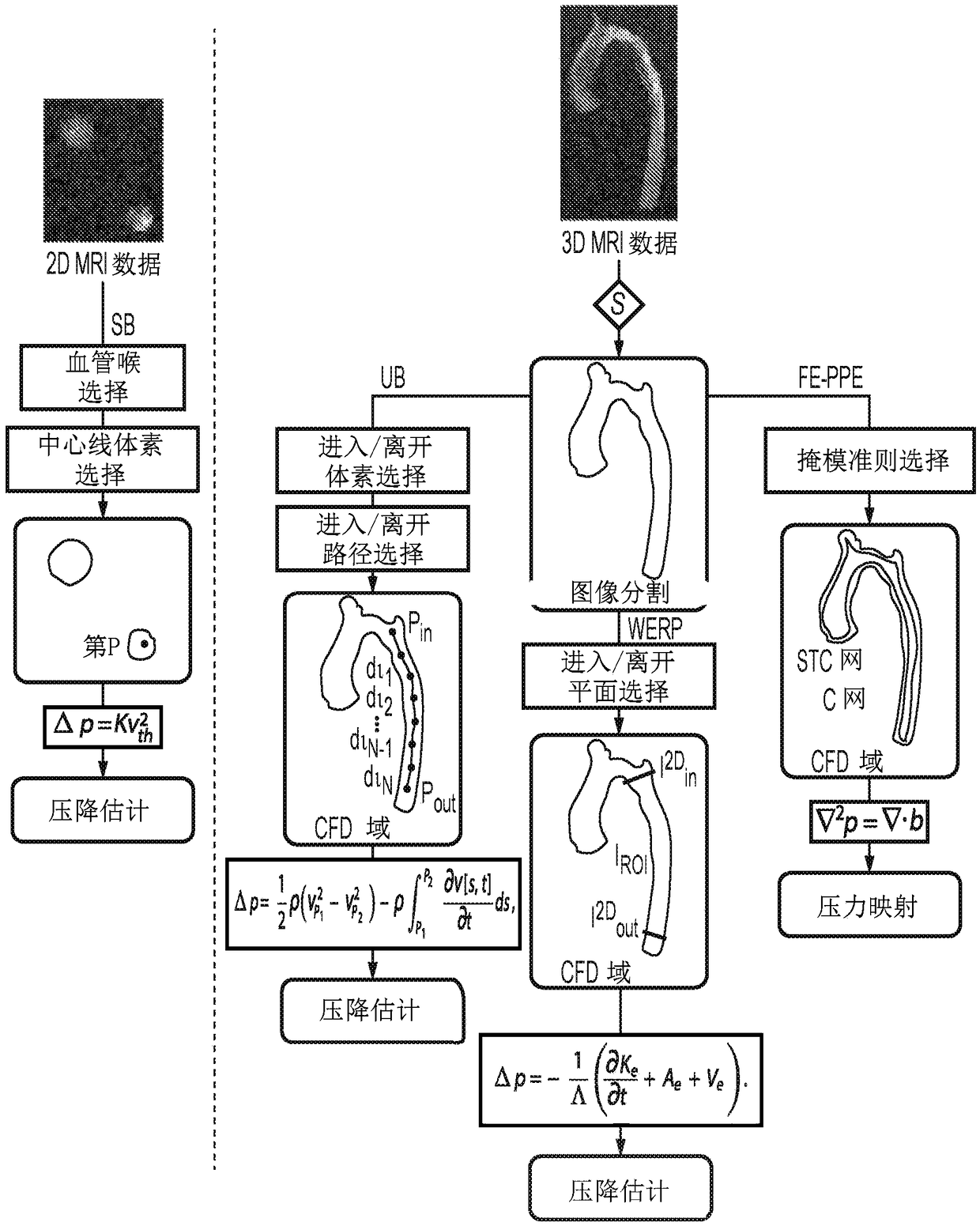Method and system for pressure drop estimation
A technology of pressure difference and pipeline, applied in the field of estimation of blood pressure drop, which can solve problems such as ignoring viscous dissipation
- Summary
- Abstract
- Description
- Claims
- Application Information
AI Technical Summary
Problems solved by technology
Method used
Image
Examples
no. 1 approach
[0033] First Embodiment: Full WERP
[0034] 2. Method
[0035] Starting from the work-energy principle, we obtain the formula for the pressure difference over the vessel section (section 2.1). Subsequently, we detail the discrete algorithms (Section 2.2) and preprocessing steps (Section 2.3) which are required to work with 4D PC-MRI data.
[0036] 2.1. Pressure difference from fluid work-energy
[0037] The pressure differential in a fluid system is related to the dynamics of the flow field. This relationship is described by the well-known Navier-Stokes equations in which, in the absence of gravity, changes in pressure are balanced by fluid acceleration and viscous stress. Work-energy generation for an incompressible isothermal Newtonian fluid over a region of interest (ROI) (Ω) with a boundary Γ using the conservation of mass and momentum for a closed system:
[0038]
[0039] where v represents the velocity, p represents the pressure, n is the normal vector on Γ, An...
no. 2 approach and no. 3 approach
[0099] Second and Third Embodiments: Full Advection WERP and Simplified Advection WERP
[0100] The second and third embodiments relate to simplifications of the full WERP process, which mean that less complex imaging modalities that acquire less information can be used. Specifically, as described below, the full advection WERP protocol can be performed using an arbitrary modality that renders velocity data (e.g., 2D PC MRI or 3D Doppler ECG) in two anatomical planes, while the simplified advection protocol can be performed with the rendered Any modality of velocity data (eg, 2D PC MRI, 3D Doppler ECG, or 2D Doppler ECG data) in a single anatomical plane is used together. Access to this portion of information (ie, velocity data in a single anatomical plane) is feasible with Doppler ECG imaging equipment that is very common in many clinical settings.
[0101] This is followed by a discussion of the scheme, presentation of various results, and a comparison with prior art Bern...
no. 2 Embodiment approach system
[0188] Second Embodiment System Description
[0189]A second embodiment involves performing only a subset of WERP processing by considering only the advective term of the full WERP equation. Thus, less information is required and simpler imaging systems can be used, especially 2D PC MRI systems as well as 3D Doppler ECG systems. Figure 9 is a block diagram of a 2D MRI system that can be used to perform the process of calculating the pressure drop.
[0190] Here, a 2D phase-contrast magnetic resonance imaging (2D PC MRI) system 902 is provided, the system comprising MR imaging coils within which the subject is located, the coils being controlled by an MRI imaging control system 98 comprising MRI control Processor 90. The MRI imaging control system 98 including the MRI controller processor 90 functions in a conventional manner to allow acquisition of, for example, 3-dimensional phase contrast magnetic resonance imaging data of the internal vessels of a subject for whom pressu...
PUM
 Login to View More
Login to View More Abstract
Description
Claims
Application Information
 Login to View More
Login to View More - R&D
- Intellectual Property
- Life Sciences
- Materials
- Tech Scout
- Unparalleled Data Quality
- Higher Quality Content
- 60% Fewer Hallucinations
Browse by: Latest US Patents, China's latest patents, Technical Efficacy Thesaurus, Application Domain, Technology Topic, Popular Technical Reports.
© 2025 PatSnap. All rights reserved.Legal|Privacy policy|Modern Slavery Act Transparency Statement|Sitemap|About US| Contact US: help@patsnap.com



